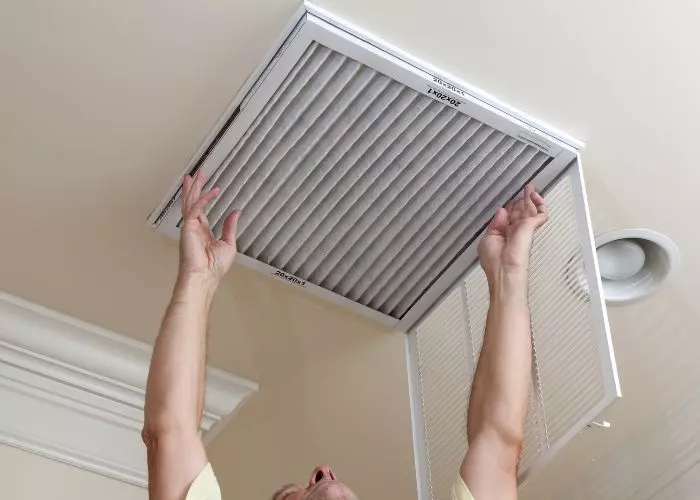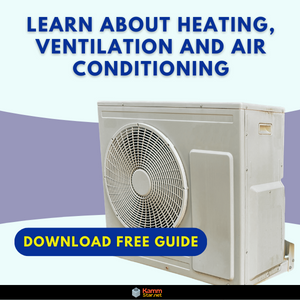In today’s fast-paced world, ensuring a comfortable and healthy indoor environment is crucial. HVAC systems play a pivotal role in achieving this goal. Among the many components that contribute to HVAC efficiency, ERV (Energy Recovery Ventilation) stands out as a key technology for enhancing indoor air quality.
ERV systems have gained popularity due to their ability to strike a balance between energy conservation and proper ventilation. In this article, we will delve into the concept of ERV in HVAC, exploring its benefits and how it contributes to maintaining a healthier and more sustainable living or working environment.

Understanding Energy Recovery Ventilation
ERV, which name is Energy Recovery Ventilation is an innovative HVAC technology that facilitates the exchange of heat and moisture between incoming and outgoing air streams. This process allows buildings to maintain a controlled indoor environment while optimizing energy efficiency.
ERV systems are designed to capture the heat and moisture from the exhaust air and transfer it to the incoming fresh air during the ventilation process. By doing so, ERV ensures that the indoor air remains comfortable and free of excess humidity, all while reducing the energy load on the HVAC system.

The Benefits of ERV Systems
Implementing ERV systems in HVAC setups offers several notable benefits. Firstly, ERV helps to conserve energy by using the energy already present in the conditioned air. This leads to reduced heating and cooling requirements, that results in lower utility bills.
Secondly, ERV contributes to improved indoor air quality by effectively removing pollutants, allergens, and odors. The continuous exchange of stale air with fresh outdoor air ensures a healthier and more pleasant indoor environment. Additionally, ERV helps prevent moisture-related issues such as mold growth, and regulates humidity levels within the building.
What Is ERV in HVAC
ERV systems play a vital role in enhancing the overall efficiency of HVAC systems. By recovering the energy from the outgoing air, ERV reduces the workload on heating and cooling equipment, leading to reduced energy consumption and lower utility bills. This eco-friendly technology also improves indoor air quality.
This means HVAC systems don’t have to work as hard to maintain the desired indoor temperature, leading to longer equipment lifespans and reduced maintenance costs. Moreover, ERV’s ability to precondition the incoming air results in a more balanced load on the HVAC system, ensuring optimal performance and energy savings.

Applications of ERV in Various Settings
The versatility of ERV (Energy Recovery Ventilation) systems makes them suitable for various settings, from residential buildings to commercial spaces and industrial facilities. In residential applications, ERV is ideal for maintaining a healthy indoor environment in energy efficient homes .
In larger buildings like offices and schools, ERV ensures the constant supply of fresh air, contributing to a more productive and comfortable atmosphere. Even in industrial environments, ERV can be used to regulate air quality and temperature, promoting the well-being of employees and the efficiency of operations.

Considerations When Installing an ERV System
While ERV systems offer many advantages, proper installation, and maintenance are crucial for optimal performance. Sizing the system appropriately, based on the building’s size and occupancy, is essential for achieving the desired results. Regularly cleaning and replacing filters ensure efficient heat and moisture transfer, maintaining healthy indoor air quality.
Regular maintenance, including filter replacement and cleaning, ensures the system operates efficiently and prolongs its lifespan. Additionally, it’s vital to work with experienced HVAC professionals who understand the complexities of ERV technology to ensure a successful installation and long-term benefits.
Frequently Asked Questions
How does ERV contribute to HVAC efficiency?
ERV enhances HVAC efficiency by recovering the energy from the outgoing air and transferring it to the incoming fresh air. This reduces the workload on heating and cooling equipment, leading to energy savings, longer equipment lifespans, and lower maintenance costs.
What are the benefits of implementing ERV systems in buildings?
Implementing ERV systems in buildings offers several benefits. Firstly, it helps conserve energy by using the existing energy in the conditioned air. Secondly, ERV improves indoor air quality by removing pollutants and maintaining proper humidity levels. Additionally, it prevents moisture-related issues such as mold growth, promoting a healthier indoor environment.
In which types of buildings and settings can ERV systems be used?
ERV systems are versatile and can be used in various settings. They are suitable for residential buildings, commercial spaces like offices and schools, as well as industrial facilities. ERV ensures a constant supply of fresh air, promoting well-being and comfort in these environments.
What considerations should be taken into account when installing an ERV system?
When installing an ERV system, several considerations are important. Proper sizing of the system based on the building’s size and occupancy is crucial for optimal performance. Regular maintenance, including filter replacement and cleaning, ensures efficient operation and prolongs the system’s lifespan.
Are there any specific climates where ERV systems are more advantageous?
ERV systems are advantageous in both hot and cold climates. In hot climates, ERV helps reduce the cooling load by pre-cooling incoming air with the cooler exhaust air. In cold climates, it preheats the incoming air with the warmer exhaust air, reducing the heating load.
Conclusión
In conclusion, Energy Recovery Ventilation (ERV) is an essential component of modern HVAC systems, offering energy efficiency and improved indoor air quality. By harnessing the power of heat and moisture exchange between incoming and outgoing air streams, ERV ensures a more sustainable and healthier living or working environment.
From reducing energy consumption to enhancing HVAC efficiency and promoting well-being, ERV has become a go-to solution for those seeking comfort and cost savings. As technology continues to advance, ERV is expected to play an increasingly significant role in creating a greener and more comfortable future for buildings worldwide.



















